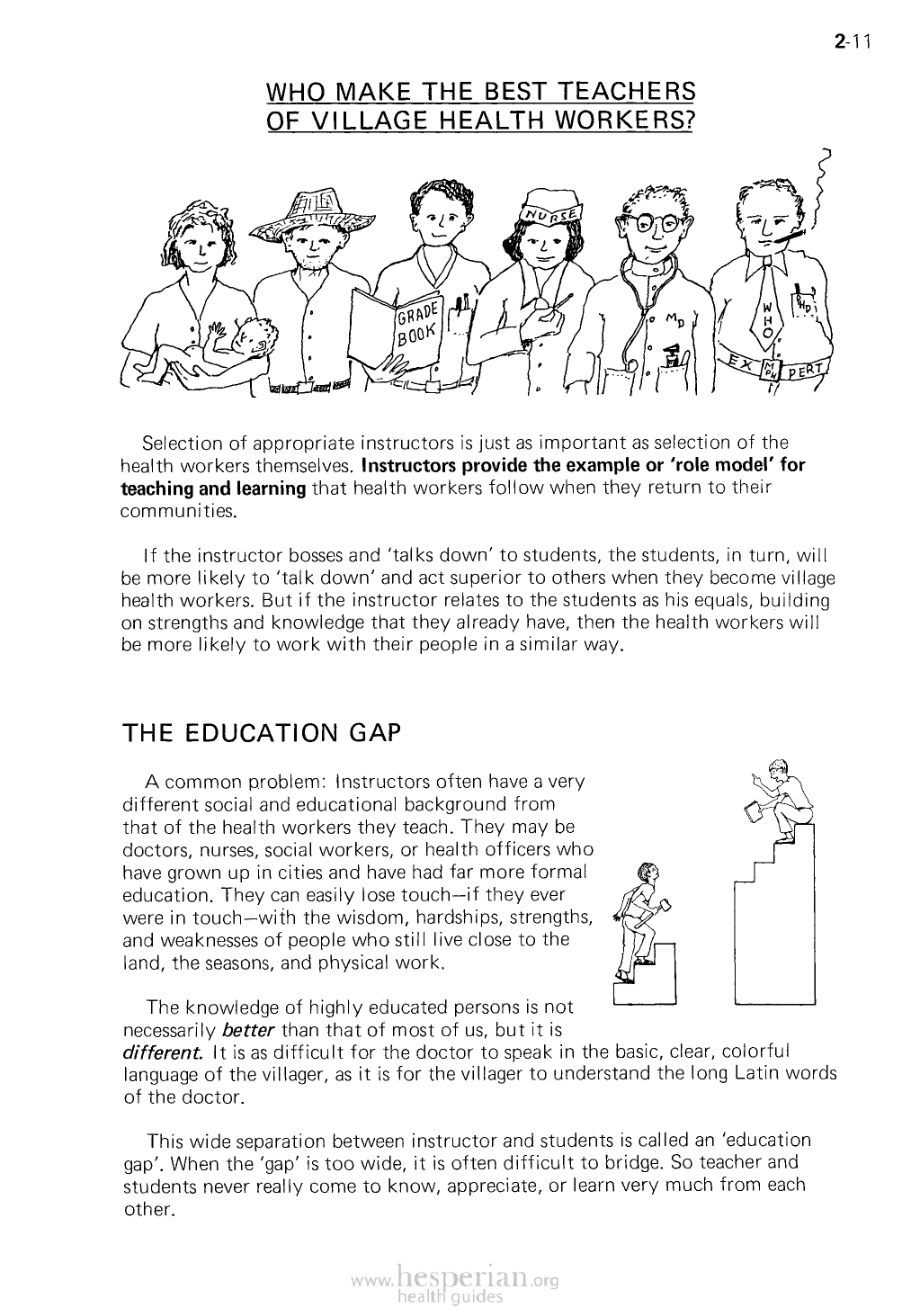
WHO MAKE THE BEST TEACHERS
OF VILLAGE HEALTH WORKERS?
2-11
Selection of appropriate instructors is just as important as selection of the
health workers themselves. Instructors provide the example or ‘role model’
for teaching and learning that health workers follow when they return to their
communities.
If the instructor bosses and ‘talks down’ to students, the students, in turn, will
be more likely to ‘talk down’ and act superior to others when they become village
health workers. But if the instructor relates to the students as his equals, building
on strengths and knowledge that they already have, then the health workers will be
more likely to work with their people in a similar way.
THE EDUCATION GAP
A common problem: Instructors often have a very
different social and educational background from
that of the health workers they teach. They may be
doctors, nurses, social workers, or health officers who
have grown up in cities and have had far more formal
education. They can easily lose touch—if they ever
were in touch—with the wisdom, hardships, strengths,
and weaknesses of people who still live close to the
land, the seasons, and physical work.
The knowledge of highly educated persons is not
necessarily better than that of most of us, but it is different. It is as difficult for the
doctor to speak in the basic, clear, colorful language of the villager, as it is for the
villager to understand the long Latin words of the doctor.
This wide separation between instructor and students is called an ‘education gap’.
When the ‘gap’ is too wide, it is often difficult to bridge. So teacher and students
never really come to know, appreciate, or learn very much from each other.